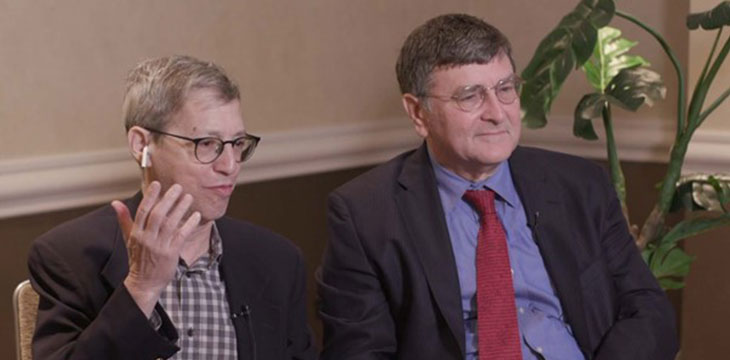|
Getting your Trinity Audio player ready...
|
Working at Bellcore Labs in the 1990s, scientists Stuart Haber and Scott Stornetta were allowed to pick their own research projects. For Scott, a problem worth solving was the authentication of digital documents: how could you be sure the version you were looking at had not been altered from its original?
The two worked as a team and were on the point of proving to themselves that the question of trust made the problem insoluble: there always needed to be some independent person or body to verify authenticity—but what if they were also part of a collusion?
But then, Scott says, as he was waiting to go into a restaurant with his family, he had a brainwave. If you needed to keep adding extra trusted parties to vouch for the honesty of the existing players, then, logically, the list would expand infinitely until the whole world was required. And that still wouldn’t be enough.
Scott’s insight was, as he explains it, “I realised that if you turn that upside down and created a system of interlinked documents with essentially everyone as a witness, then you had, in fact, solved the problem.”
As Stuart points out, time is an agreed social construct. So, using time means that, in effect, the world would be able to validate your document as having existed in a particular form at a particular time.
On this week’s CoinGeek Conversations, Scott and Stuart talk about how they turned their theory into working code and how that became a key part of the Bitcoin Whitepaper and the software that powers the Bitcoin blockchain.
Their original paper, “How to Timestamp a Digital Document,” was published in 1990. It showed how the various elements of a timestamp verification system would work. As Stuart explains:
“The only sensible thing is to craft a system where there’s a way to, as it were, register or certify a file. The result of that process has to be an additional file of some kind. We called it a timestamp certificate, but you could also call it a proof of registration. And then the third part of the system is that there has to be a way of checking these things.”
In practical terms, they used hash functions to generate the additional files. Stuart describes a one-way hash function as “a way of …taking the fingerprint of a file.” And that was the basis of the system that Bitcoin uses to this day:
“Now we call it a blockchain, but we built a chain of blocks. And in order to achieve worldwide agreement …on the registration requests that our service had received once a week, we would compute a fingerprint, a small string of numbers and letters …that efficiently summarised the entire week of requests that had preceded it, and we published that.”
The two started their own company, Surety, which operates to this day. And the Sunday edition of the New York Times still publishes, as an ad the company pays for, the hash that acts as the ‘fingerprint’ for all of the last week’s transactions.
Scott says he and Stuart welcomed Satoshi Nakamoto using their timestamping work in Bitcoin: “It was terrific in my mind that on top of a foundational layer, Satoshi had this terrific innovation.”
An important part of Satoshi’s development of the idea was to limit it to money, Scott says. They had had wider ambitions, but a more focused approach was more productive: “We expected all the world’s financial records would be done with this system. But in addition, all the world’s photographs, all the world’s movies. So we weren’t short on ambition, but I think there was great insight to limiting it to a very specific use case.”
Satoshi also created the mining network: “The other innovation was creating a terrific set of economic incentives to incentivise different players to hold on to the records and have a reason to want to validate and preserve the records.”
Stuart says he and Scott were pleased to have been invited to the CoinGeek conference in New York, where they met Dr. Craig Wright for the first time: “Scott and I both met Craig …and we’ve enjoyed our conversation, great conversation with him, both on stage and off stage, about all sorts of topics – not all of them involving hash functions.”
Hear the whole of Stuart Haber and Scott Stornetta’s interview in this week’s CoinGeek Conversations podcast or catch up with other recent episodes:
You can also watch the podcast video on YouTube.
Please subscribe to CoinGeek Conversations – this is part of the podcast’s fourth season. If you’re new to it, there are plenty of previous episodes to catch up with.
Here’s how to find them:
– Search for “CoinGeek Conversations” wherever you get your podcasts
– Subscribe on iTunes
– Listen on Spotify
– Visit the CoinGeek Conversations website
– Watch on the CoinGeek Conversations YouTube playlist

 12-13-2025
12-13-2025 





